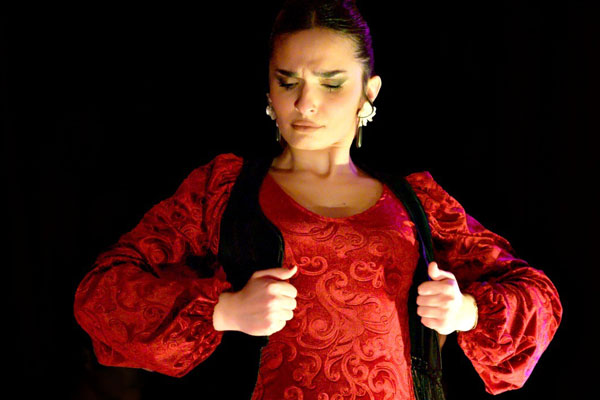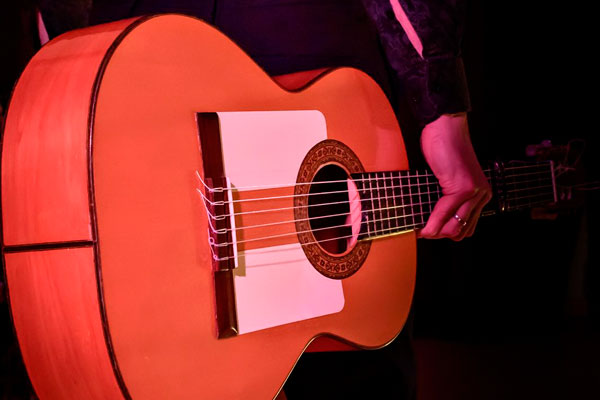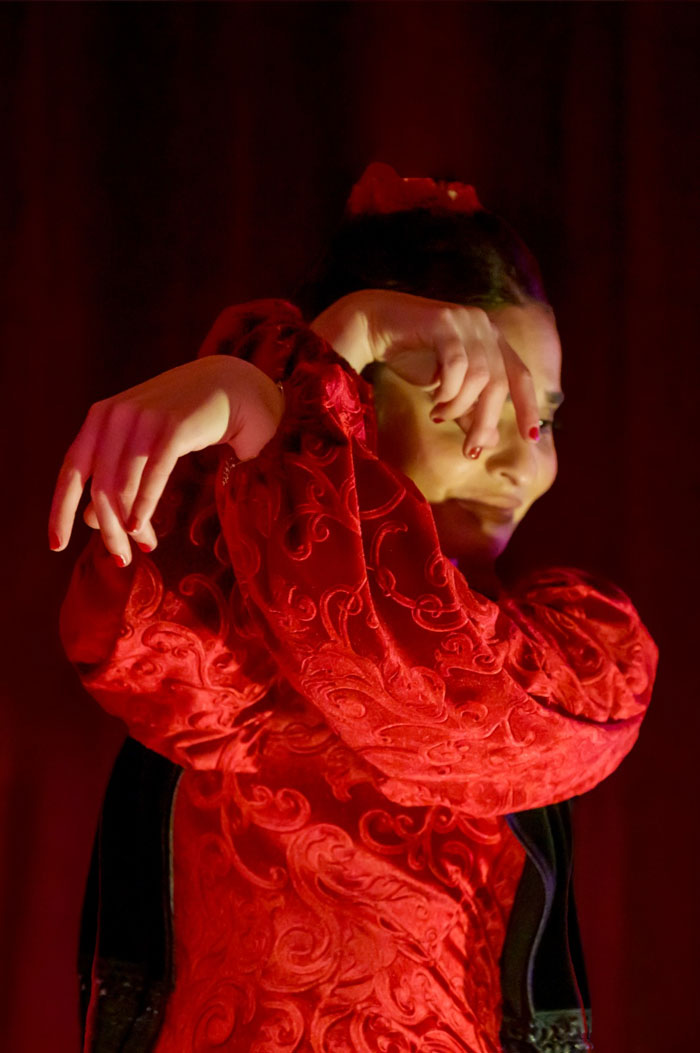Flamenco isn’t something you explain; it’s something you feel. It’s an art form that comes from deep within — from a profound emotion that doesn’t always have words. That’s why, to truly understand flamenco, it’s not enough to just listen from a distance or watch it like any other show. You have to experience it up close, in an intimate space, where every gesture, every note, every cry pierces you deeply.
An art born from intimacy
Flamenco has deep roots in the everyday life of the Andalusian people — in family gatherings, in patios, in taverns, in hidden corners where people would sing, play, and dance for themselves, not to impress anyone. It was a way to release the soul, to express joy and sorrow through body and voice.
So, even though flamenco now shines on grand stages and international festivals, its essence remains intimate. Flamenco was born in closeness — and that’s where it’s best understood.
Emotion lives in the details
In an intimate setting — a small tablao, a flamenco club, a cozy room — the experience transforms. You’re so close to the artist that you can see their pupils dilate before a cante, the veins in their neck tense during a powerful moment, the heel striking the floor in anger or tenderness. You don’t just watch flamenco; you feel it resonate a few feet away — almost inside you.
This proximity reveals things that often get lost in larger venues: the knowing glances between musicians, the synchronized breaths, the silences that speak louder than any note. These subtle moments — the soul of flamenco — can only be fully appreciated up close, when you share the same air, the same rhythm, the same breathless pause before the climax.
Duende needs intimacy
In flamenco, people often speak of the duende — that mysterious force that arises when the art reaches deep into the soul. Poet Federico García Lorca said that duende “is not a matter of skill, but of a mysterious power that everyone feels and no philosopher can explain.”
Duende appears most often when the artist feels free, supported by a close and attentive audience. The intimacy of the space doesn’t just benefit the viewer — it transforms the performer as well.
A living experience, not a frozen show
On a big stage, flamenco can impress with technical brilliance, lighting, and production. But sometimes it loses something essential: the living connection between artist and audience. In a smaller space, there’s no room for pretense. What you see is real. What is sung is felt. What is danced is lived.
And that’s what turns an intimate flamenco night into a transformative experience. It doesn’t matter if you know a lot or a little about the genre, if you understand the lyrics or not — the emotion still reaches you, raw and direct.
Conclusion: choose the authentic
If you truly want to know flamenco — not as a tourist, not as a casual spectator, but as someone searching for the truth in the art — find an intimate setting. A place where the artist is only steps away, where the sound doesn’t come through giant speakers, where applause is genuine, not automatic.





